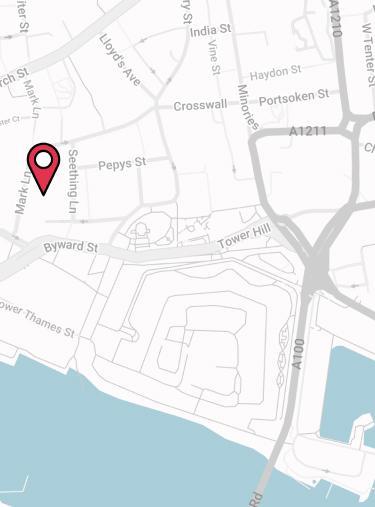Since 2012, it’s been a legal requirement for all UK employers to provide a Workplace Pension scheme to their employees. However, setting up a scheme can be challenging.
There are many factors to think about when choosing a pension scheme. Employers also have to consider the admin and ensure they meet legal obligations. To help make the process simple for you, we’ve created this step-by-step guide on how to set up a Workplace Pension.
How To Set Up A Workplace Pension Scheme For Your Employees
Setting up a Workplace Pension is not simple. By law, employers have an obligation to adhere to the pension regulations, so it’s important to get it right. Here are the steps you need to take to set up a Workplace Pension scheme.
1. Choose A Workplace Pension Provider
To set up a pension, you need to have picked a pension provider that suits your business needs. This step involves researching your options and comparing the providers available. You can use the factors we’ve listed above to help with your research.
You can compare providers or get support from a business or financial adviser. At Drewberry, our specialist team can provide recommendations for the best Workplace Pension providers for your needs.
2. Assess Your Workforce
After picking a pension provider, your next step is assessing your workforce. Which members of staff meet the criteria for automatic enrolment? Do you hire any seasonal or temporary staff? What about part-time employees? Or low earners? This will affect who is eligible.
You must auto enrol any employees who:
- Are aged between 22 and State Pension Age
- Earn over £10,000 a year
- Normally work in the UK and paid via PAYE.
Assessing your workforce will give you the information to ensure correct enrolment.
3. Work Out Your Employer Contributions
By law, you have to pay a minimum of 3% of your employees’ qualifying earnings into their pensions. You can choose to contribute more if you wish, but not less.
You will need to decide before setting up the payroll for your scheme how much you plan to contribute. This will ensure that your payroll software is set up correctly and contributions are paid.
For example, an employee earning £30,000 has qualifying earnings of £23,720. As their employer, contributing 3% means you’d pay about £712 per year. If you match their 5% contribution, your total contribution would be around £1,186 per year.
SPECIALIST TIP 🤓
Enhanced Workplace Pension contributions were the third most sought-after benefit by employees, according to our 2025 Employee Benefits Survey. By offering rewards that employees really value, you can increase motivation, improve morale and boost productivity.
4. Ensure Payroll Is Set Up
Your payroll service needs to be compatible with your auto enrolment scheme. Most payroll software is compatible, but it’s best to check to avoid problems during setup. The system must have the right information for contributions to be paid on time.
But if your current payroll system isn’t compatible, you’ll need to make changes. This will probably require more admin, and even extra costs, but it’s a key part of the setup process. Otherwise, it’ll affect your ability to carry out your legal duties.
5. Communicate The Workplace Pension To Your Staff
This step is a legal requirement for an employer. You must inform your employees of your Workplace Pension scheme. For new employers, you have to do this within six weeks of the date you first employ someone. From then on, whenever you hire someone, they must also be told about the scheme.
There are several ways to communicate the Workplace Pension to all your staff. Company-wide emails, postal letters, and educational webinars are effective methods.
You need to provide information about the Workplace Pension scheme and how auto enrolment works, as well as let them know they can opt out. You also need to tell them whether you’re planning to postpone the start date of the scheme. There are letter templates online to help employers make this step easier.
6. Declare Your Compliance With The Pensions Regulator
To finalise the setup of your Workplace Pension, you have to declare your compliance with The Pensions Regulator. This confirms you have fulfilled your legal duties. Your letter of compliance has to be completed within five months of your duties’ start date. Doing so can help you to avoid any fines or penalties later down the road.
This step can take as little as 15 minutes if you have the necessary information at hand. The Pensions Regulator has a checklist to help ensure you have the information you need.
Do Employers Have To Set Up A Workplace Pension Scheme?
No matter your industry or business size, all UK employers must offer their eligible employees a workplace pension. Whether you only have one employee or 50, you’re legally obliged to set up a scheme.
What Is Automatic Enrolment?
As part of the Pensions Act 2008, the government introduced automatic enrolment. Auto enrolment refers to staff being automatically enrolled into a pension scheme if they meet the age and earnings criteria. Its aim is to encourage people to save more for retirement.
As an employer, it’s your duty to set up a qualifying auto enrolment pension scheme. You must do so as soon as you hire someone. From then on, any new eligible employees must be auto enrolled. This makes contributing to a Workplace Pension easy for employees, as they don’t need to do anything in order to contribute.
How Does A Workplace Pension Work?
Once your employees are enrolled, a percentage of their qualifying earnings each month will be deducted. This amount is added to their pension pot. The employer pays into the employee’s pension pot too.
There are various ways for employers to deduct pension contributions. We’ll go into more detail on this later.
Both employer and employee contributions are invested into a mix of funds to enable the pot to potentially increase in value. This is known as a Defined Contribution Scheme.
The size of the employees pension pot at retirement will depend on the level of contributions both you and they have made, as well as the performance of the investments.
Most pension schemes allow employees to access their pension funds between the ages of 60 and 65. In some circumstances, they can access it earlier, at age 55.
Our specialist in-depth review of each of the UK's leading corporate pension providers
What To Consider When Setting Up A Workplace Pension
There are many things to consider before setting up your Workplace Pension scheme.
Your Business Needs
There are many providers on the UK pensions market to choose from. Not every pension provider will meet your needs, so it’s essential you identify what these are first.
- How much has your company budgeted for your employee benefits?
- What are the demographics of your workforce?
- Do they have specific requirements?
- How much do they earn?
- Will you need any extra support to set up and manage your workplace pension scheme?
These questions will get you thinking about your business needs and enable you to find a suitable scheme.
Eligibility And Automatic Enrolment Duties
Most Workplace Pension schemes facilitate automatic enrolment. But it’s always best to double check if the provider you’re considering allows you to fulfil your legal duties.
Another important factor is your company’s eligibility. Some major UK pension providers have a five employee minimum. If you have fewer staff members than this, you won’t be able to set up your scheme with certain providers.
The Costs
It’s important to think about Workplace pension setup costs. You will need a clear idea of the prices, as well as ongoing management charges, if applicable.
For example, some providers may charge you to a setup fee. There are a number of other potential fees you need to be aware of too:
- Annual Management Charge (AMC)
- Payroll configuration
- Cost of working with a financial adviser if necessary
- Pension contributions as an employer
- Monthly administration fees.
Methods Of Tax Relief
Your new Workplace Pension scheme is liable for tax. There are multiple methods of taxing pension schemes. These options will impact how your employees contribute and if they get tax relief.
- Relief At Source (RAS)
Relief at source takes contributions from an eligible staff member’s salary after tax. This is the method most workplace pensions use
- Net Pay
Employee contributions come from their monthly salary before tax. Therefore, their pension payments are not liable for tax
- Salary Sacrifice
Salary sacrifice allows an employee to sacrifice part of their gross salary for a non-cash benefit. In this case, we’re talking about pension contributions. Staff can pay into their pension pot without lowering their tax home pay.
Investment Funds
Pension savings are invested into a mix of funds to enable the pot to increase in value. Most employers opt for the default fund, but this might not suit your business or employee needs.
Before you set up your scheme, identify the types of investment funds and how many the provider offers. Most have multiple investment choices – some even hundreds.
Think about your employee demographics. Some may want to invest ethically, so ethical options are necessary. Others with Islamic faith, for example, will need Sharia-compliant funds to contribute to their pension.
Admin and Resources Available
Setting up and managing a Workplace Pension scheme is time consuming. Employers have ongoing administration tasks and legal obligations.
Before setting up your company pension, you need to establish whether you have the time and resource to manage it well and in line with regulation. Failure to do this could result in penalties, such as fines, and worst case, legal action.
As an employer, it’s important to ask yourself:
- Does your business have the correct resources to manage a scheme?
- Can you outsource the admin and setup of the scheme?
- What kind of resources and support do pension providers offer?
At Drewberry, our employee benefit advisers have a wealth of knowledge surrounding employee benefits. We can help you set up your Workplace Pension scheme and take on the workload for you.
We can also ensure you meet the legal requirements and provide ongoing support. For any help, just pop us a call on 02074425880 or email help@drewberry.co.uk.
When do you have to offer a Workplace Pension scheme?
A Workplace Pension must be offered as soon as you hire someone. For new employers, this is within six weeks of hiring your first member of staff.
Employers then have to enrol any new employees that fit the eligibility criteria as soon as they start working for you. You also have to offer the workplace pension scheme to staff that don’t meet the criteria, giving them the option to opt in or join the scheme.
How can small businesses prepare their employees for retirement?
Small businesses, or in fact, any business, can help their employees prepare for their retirement by providing financial education in the workplace. This can help your employees get to grips with their pension options and make a plan for retirement according to their personal circumstances.
Financial education can also help people to identify their financial habits, learn how to budget and make better decisions with their money.
How much does it cost to match my employees’ pension contributions?
The amount you’ll pay to match your employee pension contributions will depend on how much they earn and how much they contribute to the pot each month.
Need Help Setting Up Your Workplace Pension Scheme?
With so many things to consider when setting up your Workplace Pension, the process can be overwhelming. But it’s so important to get your pension scheme up and running in the right way.
If you’d like more guidance on setting up a Workplace Pension, you can speak to one of our financial advisers. At Drewberry, our team helps many businesses with its employee benefits, including Workplace Pensions. We can provide recommendations on the best Workplace Pension for your company and assist with setting it up.
For specialist advice, don’t hesitate to get in touch with us. You can call us on 02074425880 or email at help@drewberry.co.uk.
Why Speak to Us?
Employee benefits can be a headache. But our specialists do this day-in, day-out, offering first class service when you need it most. Here’s why you should talk to us:
- Award-winning independent employee benefits consultants, working with leading UK insurers and benefit providers
- Assigned specialist on hand to help – every step of the way
- 4074 and growing independent client reviews rating us at 4.92 / 5
- Authorised and regulated by the Financial Conduct Authority. Find us on the financial services register
- Claims support when you need it most.

















